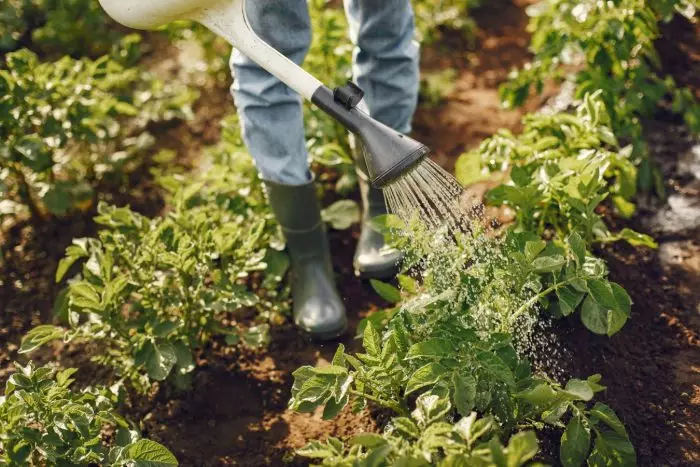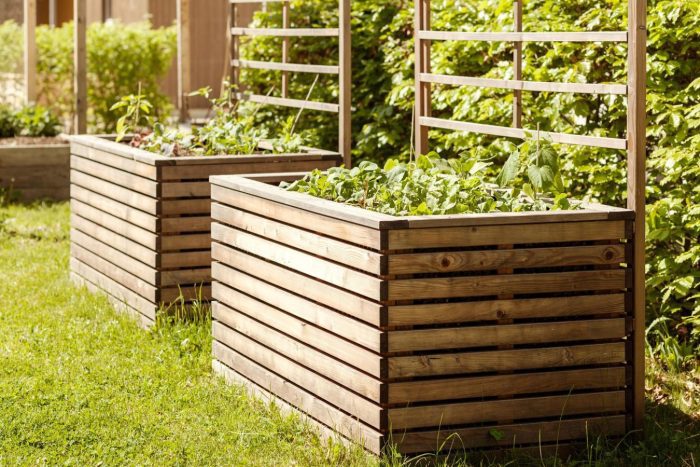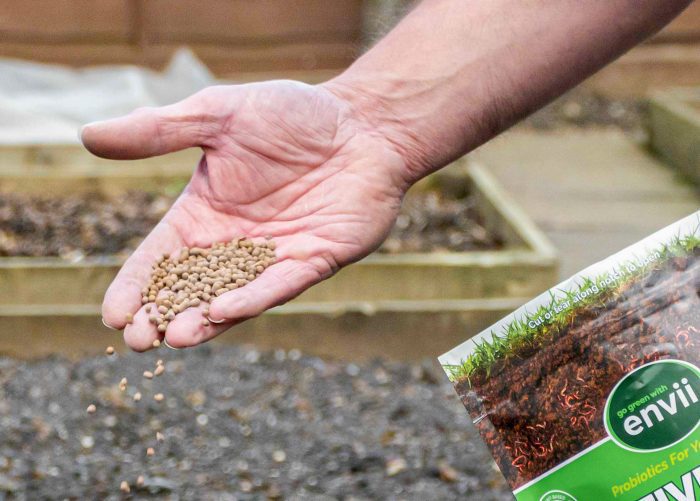Most gardeners don’t have the ability to choose the soil they have at their home or allotment and can feel discouraged about growing in an area with heavy soil. Although clay soil can be hard to manage, it is also potentially very fertile and high in plant nutrients. By following a few simple steps, it is not only possible to grow plants in this space but allow them to thrive.
How to identify clay soil
Clay soil is extremely dense, hard to dig and can be slightly sticky. This is because the particles are extremely fine and lack organic material. It tends to swell and shrink based on the weather and drains slowly after rain. If when you pick up the soil and rub it between your fingers, it feels smooth rather than gritty, chances are you have clay or heavy soil. The ideal soil is known as ‘loamy soil’, which has a good mixture of both sand and clay soil that crumbles in your hands.
Loamy Soil

Clay Soil

The issues with clay soil
Clay soil can be difficult to work with for a couple of reasons. As a heavy soil, it lacks good drainage, meaning after heavy rain the area becomes waterlogged. It can also be slow to warm up in Spring, creating a difficult environment for plants to grow in. Most flower and vegetable roots are not strong enough to penetrate through the dense clay.
How to improve heavy clay soil
Avoid walking on the beds
The worst thing you can possibly do with clay soil, or any soil in general, is compact it. As mentioned above clay soil is already lacking in aeration, compaction would further reduce aeration and drainage and create an extremely difficult growing environment. Compaction is caused by a large amount of pressure being placed on land, this could be anything from walking on it to rolling heavy machinery over it. New-built houses often struggle with compaction and waterlogging because large diggers and other machines have compacted the soil. Where possible avoid walking on the soil, especially when the soil is wet. If you are creating vegetable beds, ensure they are narrow so you don’t have to stand on them to reach crops.

Digging in organic matter
Tilling the soil and adding bulky organic matter, such as compost, well-rotted manure or leaf mould, is a common way to tackle clay soil and improve drainage. This organic matter attracts microorganisms that help to break up the soil. Add 3 or 4 inches of your chosen matter to the top of the soil and work it 4 to 8 inches into the soil. This is a time consuming and backbreaking task, which becomes expensive if a rotavator becomes involved.
Mixing in sand may seem like a logical way to tackle heavy clay soil, unfortunately, this is not the case. Without the addition of organic materials, the consistency best resembles concrete and is in fact a poor quality growing environment.

Build raised beds
A great way to grow on clay soil is to build raised beds. The compost in the raised beds will allow for good aeration and drainage for the plants. When the roots do eventually reach the clay soil, it creates a soil foundation that strengthens the plant. Long term plants prefer clay soil such as trees, shrubs and roses compared to those that are frequently sown. The best time to plant in clay soil is early autumn when there’s less chance of waterlogging. Discover how to build a two-tiered raised bed
By not digging the soil and simply placing a high-quality mulch on top, the soil is not disturbed which allows the microorganism and worms in the soil to work to improve the quality of the soil. Find out more on the benefits of no-dig gardening.

Soil Fertility Activator
The most effective and easiest way to improve heavy clay soil is to use a soil fertility activator that encourages earthworms in the soil and improves aeration and drainage. All that is required with this approach is a little bit of time and patience. Envii Activearth is a high quality, highly effective soil enhancer that improves clay soil on everything from lawns to vegetable beds. It’s simple ‘throw and go’ application technique means that very little effort is required to apply it. Find out more about Activearth

No matter which technique you choose, it can take a matter of years to see real results. The positive news is that the soil can still be used in the meantime, don’t leave the space bare. There are plenty of plants out there that like clay soil. Vegetables such as lettuce, green beans and chard have shallow roots and can therefore retain water.

 Call us on 01246 240880
Call us on 01246 240880 Free 48hr Delivery
Free 48hr Delivery Sign-up and receive 10% off
Sign-up and receive 10% off